Trichome Types on THCA Flower: Capitate vs Non-Capitate Explained
Not all trichomes are created equal – understanding the three distinct types on your THCA flower reveals secrets about potency and quality that can transform your cannabis experience.
Understanding the Microscopic World of THCA Flower
When examining high-quality THCA flower, you're looking at one of nature's most sophisticated chemical factories. The tiny, crystal-like structures covering your cannabis buds aren't just for show – they're specialized glands called trichomes that house the cannabinoids, terpenes, and other compounds that define your flower's effects and quality.
THCA trichome types vary significantly in size, structure, and function, each playing a crucial role in the overall cannabinoid profile of your flower. Understanding these differences isn't just academic curiosity; it's practical knowledge that can help you identify premium products, make better purchasing decisions, and optimize your storage and consumption methods.
The importance of trichome type identification extends beyond simple quality assessment. Different trichome structures produce varying concentrations of THCA, terpenes, and other compounds. This THCA flower anatomy knowledge empowers consumers to make informed choices about their cannabis products, whether they're seeking maximum potency, specific therapeutic effects, or simply the best value for their investment.
Modern cannabis cultivation has reached unprecedented levels of sophistication, with growers specifically selecting and breeding plants based on trichome development and density. This focus on types of trichomes on THCA flower has led to products with remarkably consistent potency and quality profiles, but it also means that understanding what you're looking at becomes increasingly valuable for the discerning consumer.
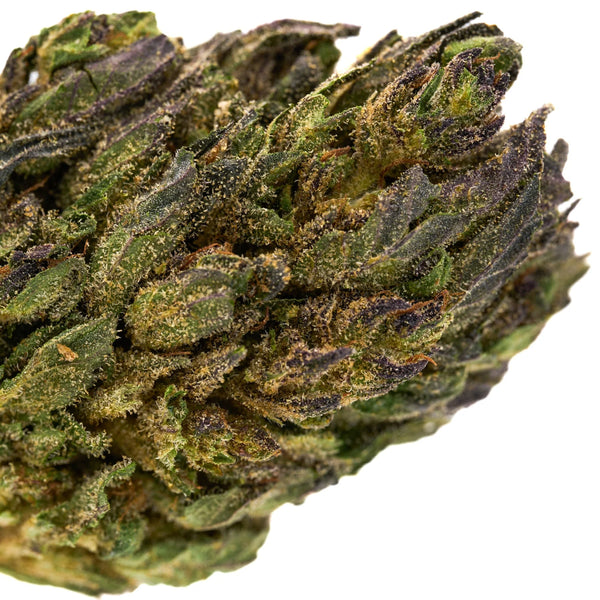
Non-Capitate (Bulbous) Trichomes: The Foundation Layer
The smallest and most numerous trichomes on your THCA flower are the bulbous trichomes THCA producers, technically classified as non-capitate due to their simple, rounded structure. These microscopic powerhouses measure just 15-30 micrometers in diameter – roughly one-third the width of a human hair – yet they play a fundamental role in your flower's overall cannabinoid production.
Structure and Identification
Non-capitate trichomes appear as tiny, clear to amber-colored bumps scattered across the entire surface of cannabis leaves, stems, and buds. Under magnification, they resemble miniature balloons or dewdrops, lacking the distinctive stalk-and-head structure that characterizes their larger cousins. Their simple construction consists of a single secretory cell surrounded by a waxy cuticle that helps retain the precious compounds within.
These THCA flowers showcase bulbous trichomes most prominently on sugar leaves and smaller bud surfaces, where they create a subtle shimmer that experienced consumers recognize as a quality indicator. While individually small, their sheer numbers – often thousands per square centimeter – make them significant contributors to overall cannabinoid content.
Location and Distribution Patterns
Bulbous trichomes demonstrate remarkable adaptability in their distribution across the cannabis plant. They appear most densely on younger growth and areas of the plant that receive moderate light exposure. Unlike their larger counterparts that concentrate heavily on flower structures, bulbous trichomes maintain relatively consistent density across leaves, stems, and even some root structures near the soil line.
This widespread distribution serves multiple purposes for the plant. Beyond cannabinoid production, these trichomes provide protection against UV radiation, help regulate moisture loss, and create an inhospitable surface for many plant pests. For consumers evaluating new THCA releases, the presence of abundant bulbous trichomes on trim leaves often indicates overall plant health and proper cultivation practices.
Function and Cannabinoid Production
While bulbous trichomes may be small, their role in THCA production shouldn't be underestimated. These structures actively synthesize cannabinoids throughout the plant's lifecycle, often beginning production earlier than larger trichome types. Their continuous production helps establish baseline cannabinoid levels that are then amplified by the larger, more visible trichome types.
Research suggests that bulbous trichomes may be particularly important for producing certain minor cannabinoids and terpenes that contribute to the entourage effect. Their consistent, low-level production throughout the plant creates a foundation layer of active compounds that enhances the overall therapeutic and psychoactive potential of the flower.
Identification Techniques for Consumers
Identifying bulbous trichomes requires some magnification, as they're generally invisible to the naked eye. A standard jeweler's loupe with 10x magnification will reveal these structures as tiny, clear bumps across leaf and stem surfaces. Under ideal lighting conditions, they create a subtle sparkle that contributes to the overall "frosty" appearance of high-quality cannabis.
When examining THCA flower, look for areas where this fine sparkle extends beyond the obvious trichome coverage on buds. Flowers with extensive bulbous trichome coverage on trim leaves and smaller branches often indicate superior genetics and cultivation practices, as these areas are typically the first to show stress-related quality degradation in inferior products.
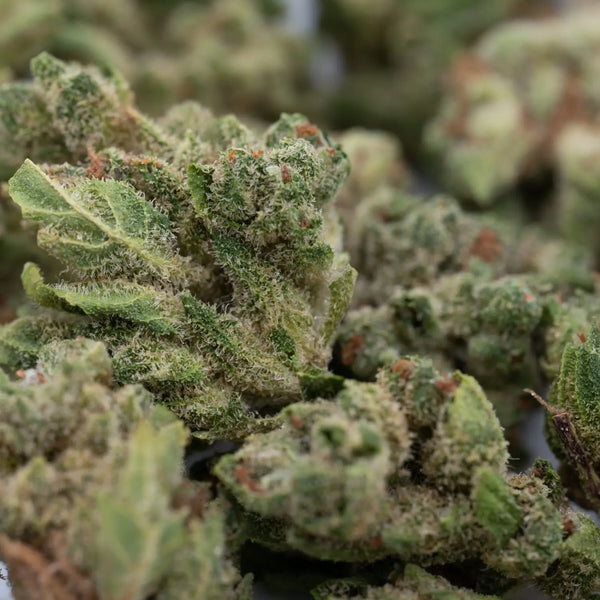
Capitate-Sessile Trichomes: The Intermediate Producers
Representing the middle ground in capitate vs non-capitate trichomes, capitate-sessile trichomes combine increased size with enhanced cannabinoid production capacity. These structures measure 25-100 micrometers in diameter, making them visible to the naked eye under good lighting conditions while remaining small enough to cover extensive surface areas of premium cannabis flowers.
Understanding "Sessile" Structure
The term "sessile" refers to the lack of a prominent stalk – these trichomes attach directly to the plant surface through a short, broad base. This architectural choice provides stability while maximizing the size of the resin-producing head. The capitate-sessile trichomes design represents an evolutionary balance between production efficiency and structural integrity.
Under magnification, these trichomes appear as mushroom-shaped structures with clear to milky heads sitting directly on the plant surface. The head contains specialized cells that actively synthesize and store cannabinoids, terpenes, and other compounds. As the trichome matures, the head fills with resin, creating the cloudy appearance that experienced cultivators and consumers use as a harvest timing indicator.
Production Capacity and Efficiency
Capitate-sessile trichomes demonstrate remarkable efficiency in cannabinoid production relative to their size. While they lack the total production capacity of the largest trichome type, their intermediate size allows for significantly higher density coverage across flower surfaces. This combination of individual production capacity and coverage density makes them major contributors to overall potency.
These trichomes excel at producing the full spectrum of cannabis compounds, including THCA, CBD, CBG, and numerous terpenes. Their production profile tends to be more balanced than some larger trichomes, which may specialize more heavily in specific compound classes. For consumers seeking well-rounded THCA flower with complex effects profiles, abundant capitate-sessile coverage often indicates superior product quality.
Distribution and Coverage Patterns
Capitate-sessile trichomes show preference for flower structures and upper leaf surfaces, where they form dense clusters that contribute significantly to visual bag appeal. Unlike bulbous trichomes that distribute relatively evenly, these intermediate-sized structures concentrate more heavily in areas of active flower development.
Their distribution pattern creates the foundation layer for what consumers recognize as "frosty" cannabis. When examining high-quality flower, capitate-sessile trichomes provide much of the visible trichome coverage that makes buds appear coated in crystal formations. This coverage pattern serves as an important quality indicator, as stressed or poorly cultivated plants often show reduced capitate-sessile development.
Quality Assessment Applications
For practical quality assessment, capitate-sessile trichomes offer some of the most reliable indicators of flower quality and potency. Their size makes them easily visible with basic magnification, while their sensitivity to environmental stress means their development directly reflects cultivation quality.
When evaluating THCA flower options, look for even distribution of these intermediate trichomes across bud surfaces. High-quality flowers show consistent capitate-sessile coverage even in less prominent areas like the base of buds and inner flower structures. Uneven coverage or areas where these trichomes appear damaged or absent often indicate handling issues or suboptimal growing conditions.
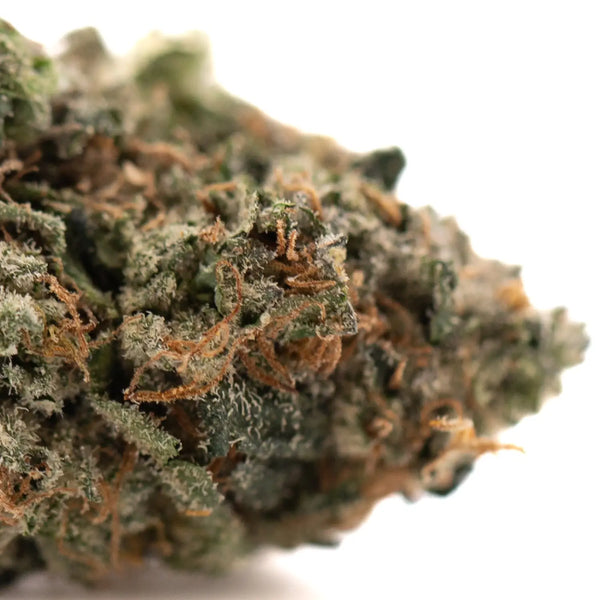
Capitate-Stalked Trichomes: The Cannabinoid Powerhouses
The largest and most productive trichomes on cannabis flowers, capitate-stalked trichomes represent the pinnacle of the plant's resin production capabilities. Measuring 150-500 micrometers in diameter with distinctive stalk structures that can extend several hundred micrometers above the plant surface, these microscopic factories are responsible for the majority of cannabinoid and terpene production in high-quality cannabis.
Architectural Sophistication
Capitate-stalked trichomes demonstrate remarkable biological engineering, with a complex structure that maximizes both production capacity and compound retention. The stalk elevates the resin-producing head away from the plant surface, potentially improving light exposure and air circulation around the active secretory cells. This elevated position also may help protect the valuable resin from direct contact with other plant structures during growth and development.
The head of a mature capitate-stalked trichome contains multiple specialized cells arranged in a sophisticated pattern that optimizes compound synthesis and storage. As these trichomes mature, the head swells with resin, creating the distinctive bulbous appearance that experienced consumers associate with peak potency. The stalk itself contains vascular tissue that supplies nutrients to the active head, ensuring sustained high-level production throughout the flowering cycle.
Maximum Production Capacity
These trichome giants can produce exponentially more cannabinoids and terpenes than their smaller counterparts. A single mature capitate-stalked trichome may contain as much active compound as dozens of bulbous trichomes. This production capacity makes them the primary determinant of overall flower potency and quality, which is why premium THCA flower consistently shows abundant capitate-stalked trichome development.
The production profile of capitate-stalked trichomes often shows specialization based on genetics and environmental conditions. Some may excel at THCA production, while others might focus more heavily on terpene synthesis or minor cannabinoid production. This specialization contributes to the unique effects profiles that distinguish different cannabis strains and cultivation methods.
Maturation and Quality Indicators
The maturation process of capitate-stalked trichomes provides crucial information about flower quality and optimal harvest timing. Young trichomes appear clear and glassy, gradually developing milky opacity as they mature and fill with resin. Overmatured trichomes may appear amber or brown, indicating degradation of some compounds.
For consumers, understanding this maturation process helps in quality assessment. Premium flowers typically show predominantly milky capitate-stalked trichomes with minimal clear or amber specimens. This indicates harvest at optimal potency levels, when THCA content peaks and terpene profiles reach their most complex development.
Distribution and Concentration Patterns
Unlike smaller trichome types that distribute relatively evenly, capitate-stalked trichomes show strong preference for specific locations on cannabis flowers. They concentrate most heavily on flower bracts, upper sugar leaves, and the surface of mature buds, creating the dramatic "frosty" appearance that defines premium cannabis.
This concentrated distribution pattern serves multiple biological purposes while creating visual indicators that experienced consumers use for quality assessment. High-quality THCA flower demonstrates dense capitate-stalked trichome coverage in these prime locations, while inferior products may show sparse or uneven distribution patterns.
Handling and Preservation Considerations
The size and elevated structure of capitate-stalked trichomes make them more vulnerable to physical damage during handling and processing. Excessive agitation, rough handling, or improper storage can cause these valuable structures to break off, directly reducing potency and quality.
This vulnerability explains why premium cannabis products often command higher prices – the careful handling required to preserve capitate-stalked trichome integrity throughout the cultivation, harvest, trimming, and packaging process requires additional time and expertise. When evaluating flower quality, intact capitate-stalked trichomes indicate proper handling and storage throughout the supply chain.
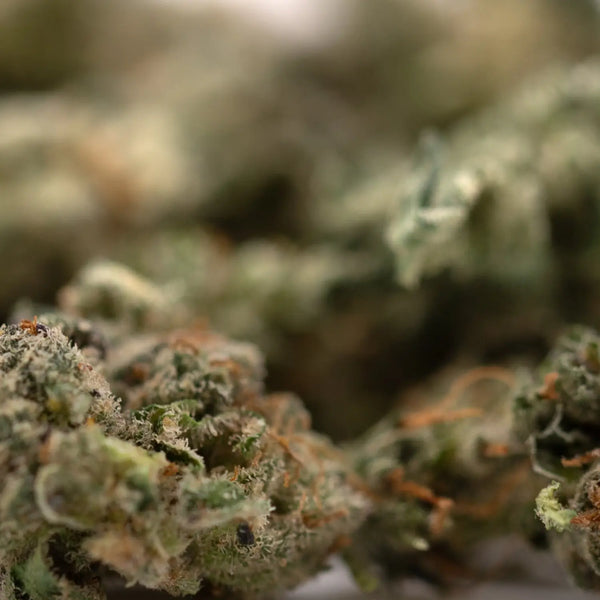
Comparative Analysis: Understanding the Hierarchy
The types of trichomes on THCA flower work together in a sophisticated system where each type contributes unique advantages to overall flower quality and effects. Understanding these relationships helps consumers make more informed decisions when selecting cannabis products and optimizing their consumption experiences.
Production Capacity Comparison
When comparing cannabinoid production capacity, the hierarchy becomes clear through both individual and collective contributions. A single capitate-stalked trichome may produce 50-100 times more resin than a bulbous trichome, while capitate-sessile trichomes fall somewhere in the middle range. However, the sheer numbers of smaller trichomes mean their collective contribution remains significant.
This production hierarchy explains why premium THCA flower commands attention from serious consumers. Products with abundant large trichomes deliver exponentially more active compounds per gram, providing better value despite potentially higher initial costs. The concentration of active compounds in capitate-stalked trichomes also means that small differences in their abundance can create dramatic differences in overall potency.
Visual Identification and Assessment
Each trichome type contributes distinct visual characteristics that experienced consumers use for quality assessment. Bulbous trichomes create subtle sparkle and shimmer across all plant surfaces. Capitate-sessile trichomes provide the foundational "frosty" appearance that makes buds appear coated in crystals. Capitate-stalked trichomes create the dramatic, easily visible resin glands that define premium cannabis aesthetics.
Learning to identify these different contributions helps consumers evaluate products more accurately. High-quality flower shows evidence of all three types working together, with each contributing to different aspects of the overall appearance and indicating different aspects of cultivation quality and genetic potential.
Distribution Pattern Analysis
Understanding how different trichome types distribute across cannabis flowers provides insight into plant health, genetics, and cultivation practices. Healthy plants show consistent bulbous trichome coverage across all surfaces, dense capitate-sessile coverage on flowers and upper leaves, and abundant capitate-stalked development on flower structures.
Stress conditions, nutrient deficiencies, or genetic limitations often show up first in altered distribution patterns. Plants may maintain bulbous trichome production while showing reduced development of larger types, or may show uneven distribution patterns that indicate specific cultivation challenges.
Quality Implications and Consumer Value
The relationship between trichome types and consumer value extends beyond simple potency considerations. Different trichome types may excel at producing different compound classes, meaning flowers with diverse trichome populations often provide more complex and satisfying effects profiles.
Quality THCA flower demonstrates balanced development across all trichome types, indicating both superior genetics and optimal cultivation practices. This balance often correlates with better flavor profiles, more nuanced effects, and improved overall user experience compared to products that may test high for specific compounds but lack the full spectrum of trichome development.
Practical Applications for Consumers
Understanding THCA flower trichome anatomy translates directly into practical benefits for consumers, from initial product selection through optimal storage and consumption methods. This knowledge empowers informed decision-making and helps maximize the value and effectiveness of cannabis purchases.
Pre-Purchase Inspection Techniques
Effective flower inspection begins with understanding what to look for in each trichome type. Use a jeweler's loupe or magnifying glass to examine potential purchases, looking for clear evidence of all three trichome types. Quality flowers should show sparkle from bulbous trichomes across all visible surfaces, dense frosting from capitate-sessile coverage, and prominent individual resin glands from capitate-stalked development.
Pay particular attention to trichome integrity during inspection. Damaged or missing trichomes indicate rough handling or extended storage, directly impacting potency and quality. Fresh THCA flower should show intact trichome structures with minimal breakage or loss.
Storage Optimization Strategies
Different trichome types have varying vulnerability to environmental factors, making proper storage crucial for maintaining quality. Capitate-stalked trichomes, being largest and most exposed, are most vulnerable to physical damage and degradation. Proper storage containers should minimize movement and physical agitation while maintaining optimal humidity and temperature conditions.
Temperature fluctuations can cause trichome heads to become brittle and break off, while excessive humidity may encourage mold development. Conversely, overly dry conditions can cause trichomes to become fragile and shed more easily. Understanding these vulnerabilities helps consumers maintain product quality over extended storage periods.
Consumption Method Considerations
Different consumption methods interact differently with various trichome types, affecting both efficiency and effects profiles. Gentle handling methods that preserve trichome integrity typically provide better flavor and more complete cannabinoid profiles. Excessive grinding or aggressive handling can damage trichomes and reduce overall potency.
Vaporization methods may be particularly effective at extracting compounds from different trichome types at different temperature ranges, potentially allowing consumers to experience the full spectrum of effects that different trichome populations provide.
Value Assessment and Purchasing Decisions
Understanding trichome types helps consumers assess true value rather than making decisions based solely on price or test results. Products with abundant large trichomes may provide better value despite higher initial costs, as they deliver more active compounds per gram and often provide more satisfying overall experiences.
When comparing THCA flower options, consider the overall trichome development rather than focusing exclusively on single metrics like THC percentage. Balanced trichome development often correlates with superior overall quality and more complex, satisfying effects profiles.
Advanced Quality Assessment Techniques
Professional-level quality assessment goes beyond basic visual inspection to include understanding how trichome development relates to other flower characteristics. This advanced knowledge helps consumers identify truly exceptional products and avoid common quality pitfalls.
Trichome Maturity Evaluation
Assessing trichome maturity requires understanding the progression from clear to milky to amber coloration in capitate-stalked trichomes. Peak potency typically occurs when most large trichomes show milky opacity with minimal clear or amber specimens. This indicates optimal harvest timing when THCA content peaks and terpene profiles reach maximum complexity.
Advanced consumers learn to identify the subtle differences in trichome maturity that indicate different effects profiles. Some products may be harvested earlier for more energetic effects, while others may be allowed to mature longer for more sedating qualities.
Density and Coverage Assessment
Trichome density varies significantly between genetics and cultivation methods, with premium products showing exceptional coverage across all appropriate plant surfaces. Learning to assess density helps identify products with superior genetic potential and optimal growing conditions.
Coverage patterns should be relatively even across flower surfaces, with concentration in expected areas but without completely bare spots that might indicate stress or damage. Premium THCA flower demonstrates consistent coverage that reflects careful cultivation and proper plant health throughout the growing cycle.
Integration with Other Quality Indicators
Trichome assessment works best when integrated with evaluation of other quality indicators like aroma, flower structure, and overall appearance. Superior products typically excel across all quality metrics, with exceptional trichome development supporting and supported by other indicators of cultivation excellence.
The relationship between trichome development and terpene expression is particularly important, as healthy trichomes are essential for complex aroma profiles. Products with exceptional trichome coverage but limited aroma may indicate storage issues or other quality concerns.
Frequently Asked Questions
What's the difference between capitate and non-capitate trichomes? The primary difference lies in structure and size. Non-capitate (bulbous) trichomes are small, simple structures measuring 15-30 micrometers, while capitate trichomes have distinct heads and range from 25-500 micrometers. Capitate trichomes include both sessile (direct attachment) and stalked varieties, with stalked types being the largest and most productive.
Which trichome type produces the most THCA? Capitate-stalked trichomes are by far the largest producers of THCA and other cannabinoids. A single large capitate-stalked trichome can produce 50-100 times more cannabinoids than a bulbous trichome, making them the primary determinant of flower potency.
How can I identify high-quality THCA flower using trichome knowledge? Look for abundant coverage of all three trichome types: subtle sparkle from bulbous trichomes across all surfaces, dense frosting from capitate-sessile trichomes, and prominent individual resin glands from capitate-stalked trichomes. Quality flowers show predominantly milky trichome heads with minimal damage or loss.
Do different trichome types affect flavor differently? Yes, different trichome types contribute different aspects to flavor and aroma profiles. Bulbous trichomes often contribute to base terpene profiles, while larger trichomes may specialize in specific compound classes. The full spectrum of trichome types typically produces the most complex and satisfying flavor profiles.
How does storage affect different trichome types? Larger trichomes, particularly capitate-stalked varieties, are more vulnerable to physical damage and environmental degradation. Proper storage should minimize movement, maintain stable temperature and humidity, and protect from light exposure to preserve trichome integrity across all types.
Can trichome type distribution indicate cultivation quality? Absolutely. Healthy plants with optimal growing conditions show consistent trichome development across all types and appropriate distribution patterns. Stress conditions, nutrient issues, or environmental problems often show up first as altered trichome development or distribution patterns.
Conclusion: Mastering THCA Flower Selection
Understanding the intricate world of THCA trichome types transforms cannabis consumption from guesswork into informed decision-making. The hierarchy of bulbous, capitate-sessile, and capitate-stalked trichomes each contributes unique advantages to overall flower quality, potency, and effects profiles.
Capitate trichomes, particularly the stalked variety, serve as the primary indicators of premium quality and potency. Their sophisticated structure and massive production capacity make them the most important factor in flower selection. However, the supporting roles of smaller trichome types shouldn't be overlooked, as they contribute to the complexity and balance that define exceptional cannabis experiences.
The knowledge of capitate vs non-capitate trichomes empowers consumers to look beyond basic metrics like THC percentages to assess true quality and value. Products with balanced development across all trichome types typically provide superior experiences compared to those that may test high for specific compounds but lack comprehensive trichome development.
When exploring new THCA releases, apply this understanding to identify products that represent genuine quality and value. Look for the visual indicators of all three trichome types, assess coverage patterns and trichome integrity, and consider how proper storage and handling can preserve the quality you're investing in.
The types of trichomes on THCA flower work together in sophisticated ways that reflect both genetic potential and cultivation expertise. By understanding these relationships, consumers can make more informed choices, better preserve their purchases, and ultimately achieve more satisfying cannabis experiences.
This knowledge represents just the beginning of understanding cannabis quality. As cultivation techniques continue advancing and genetic diversity expands, the ability to assess trichome development will remain a fundamental skill for serious cannabis consumers seeking the highest quality products available.

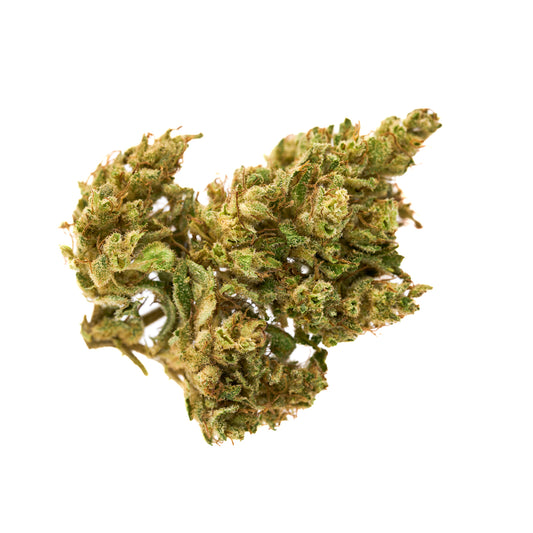
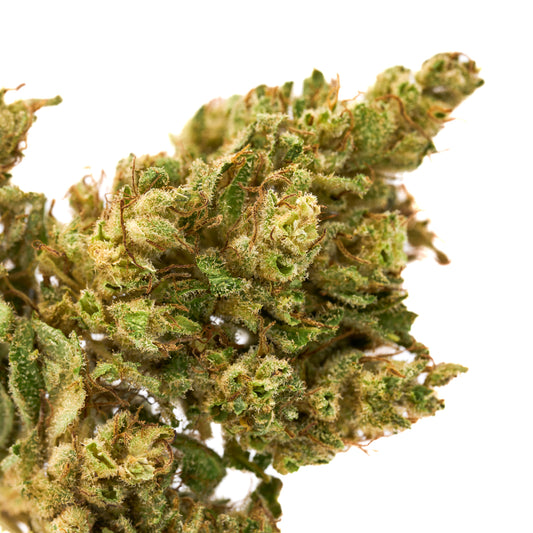
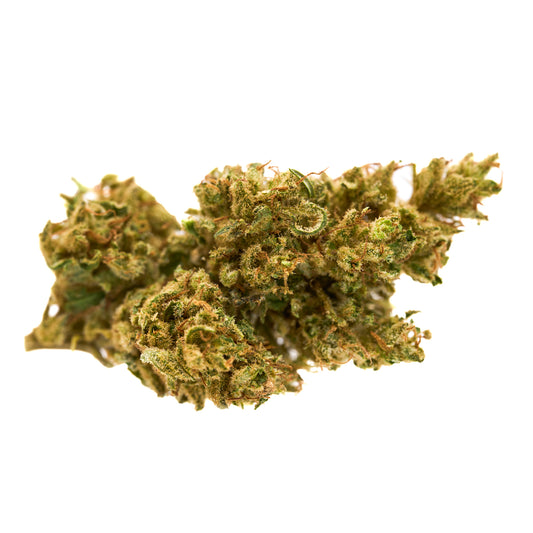
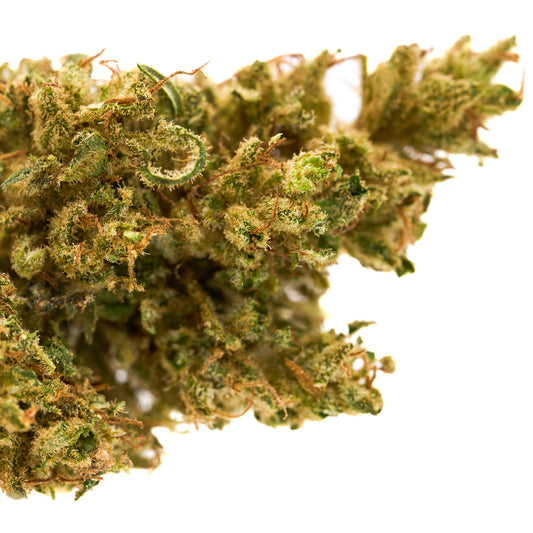
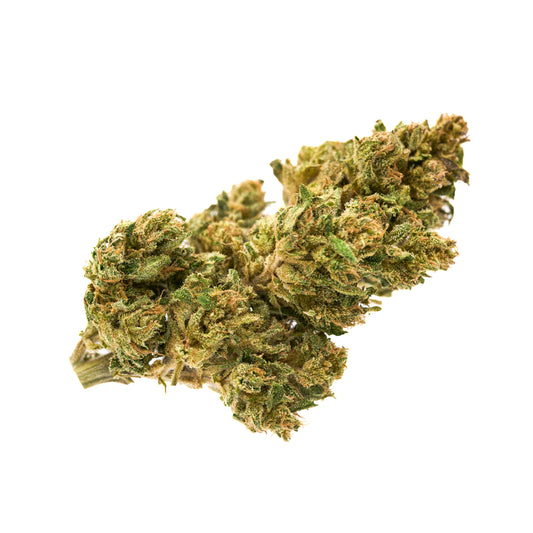
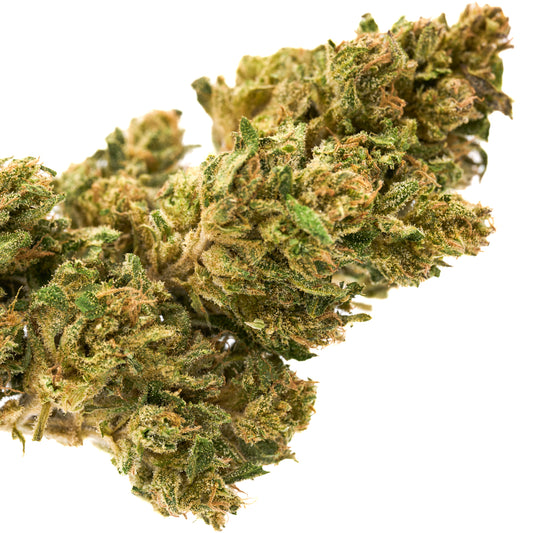



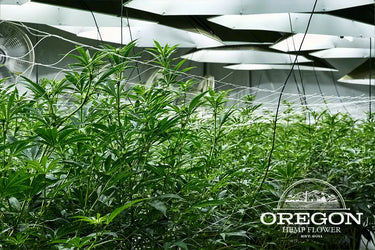

Leave a comment
Please note, comments need to be approved before they are published.